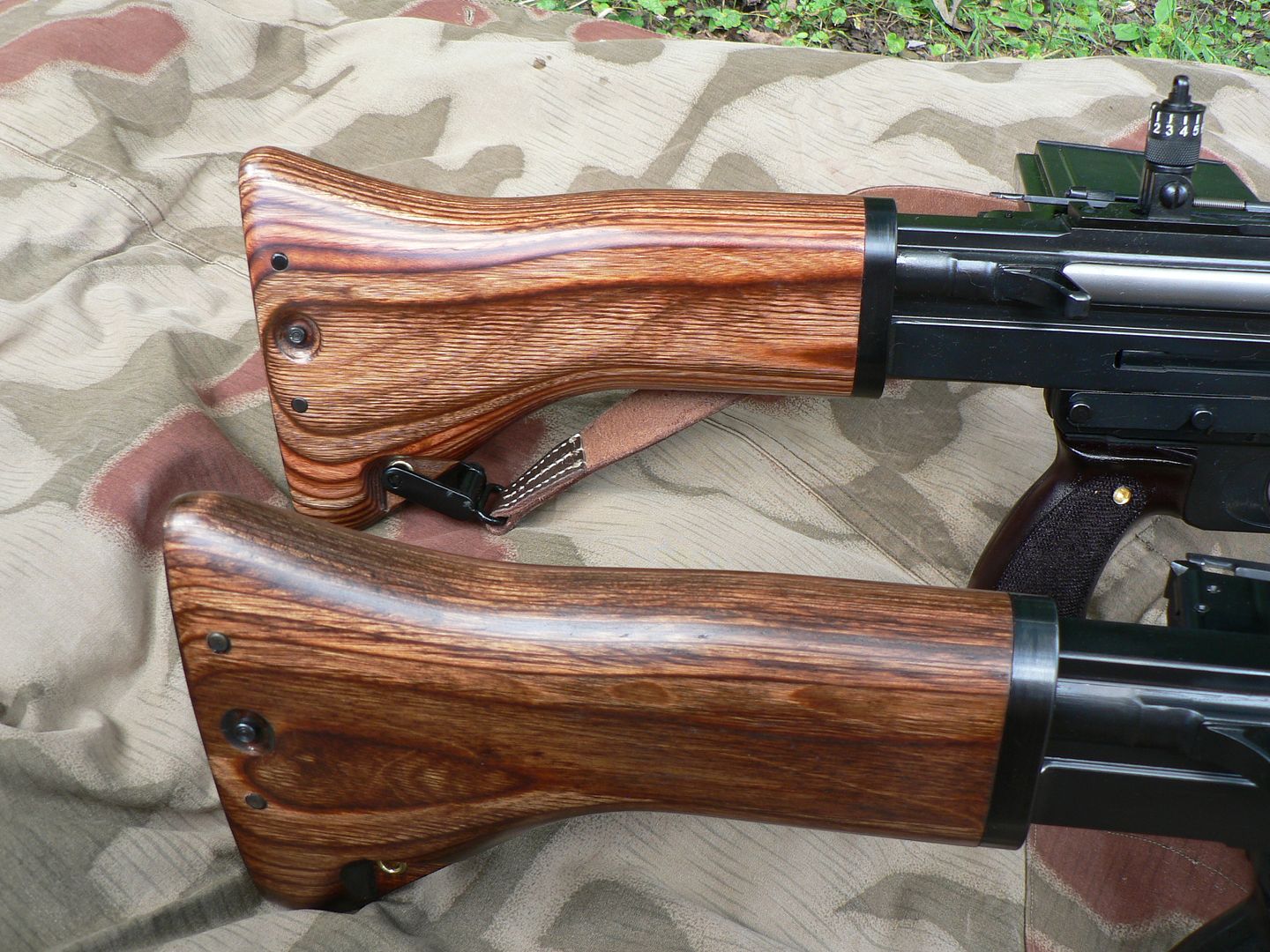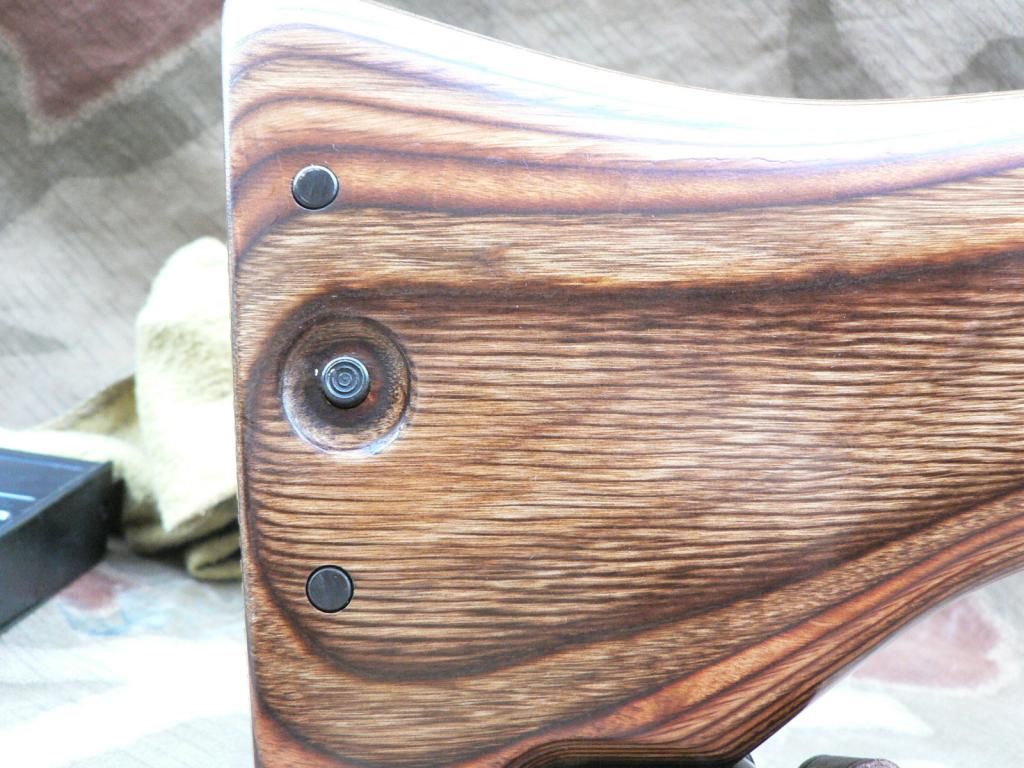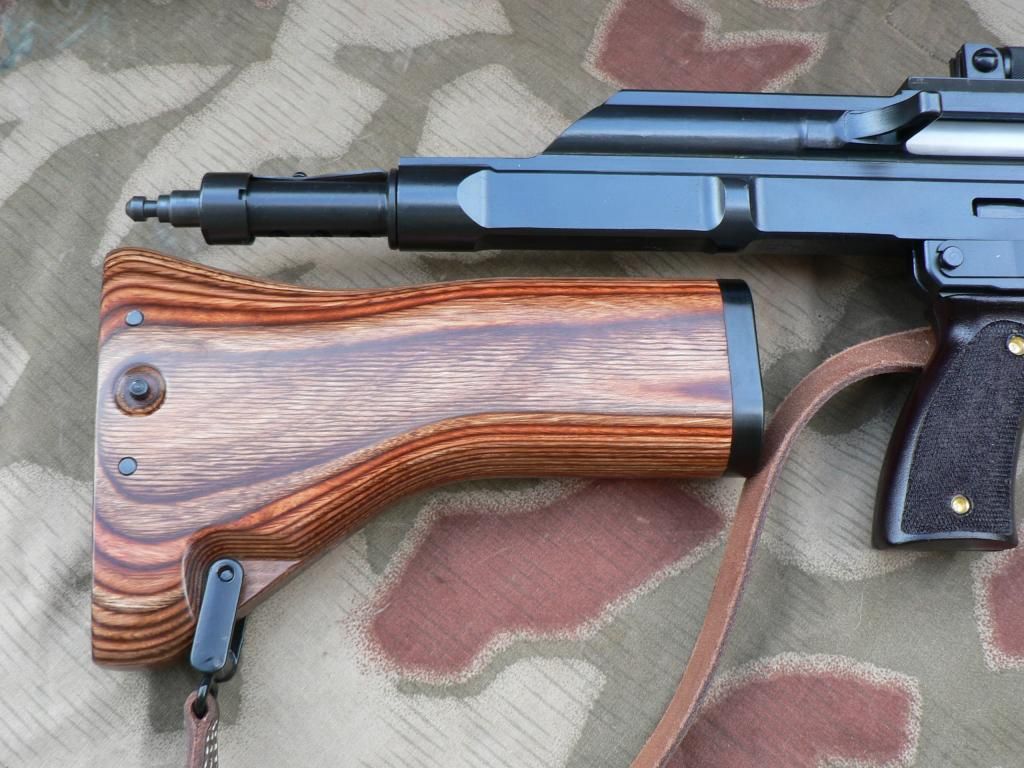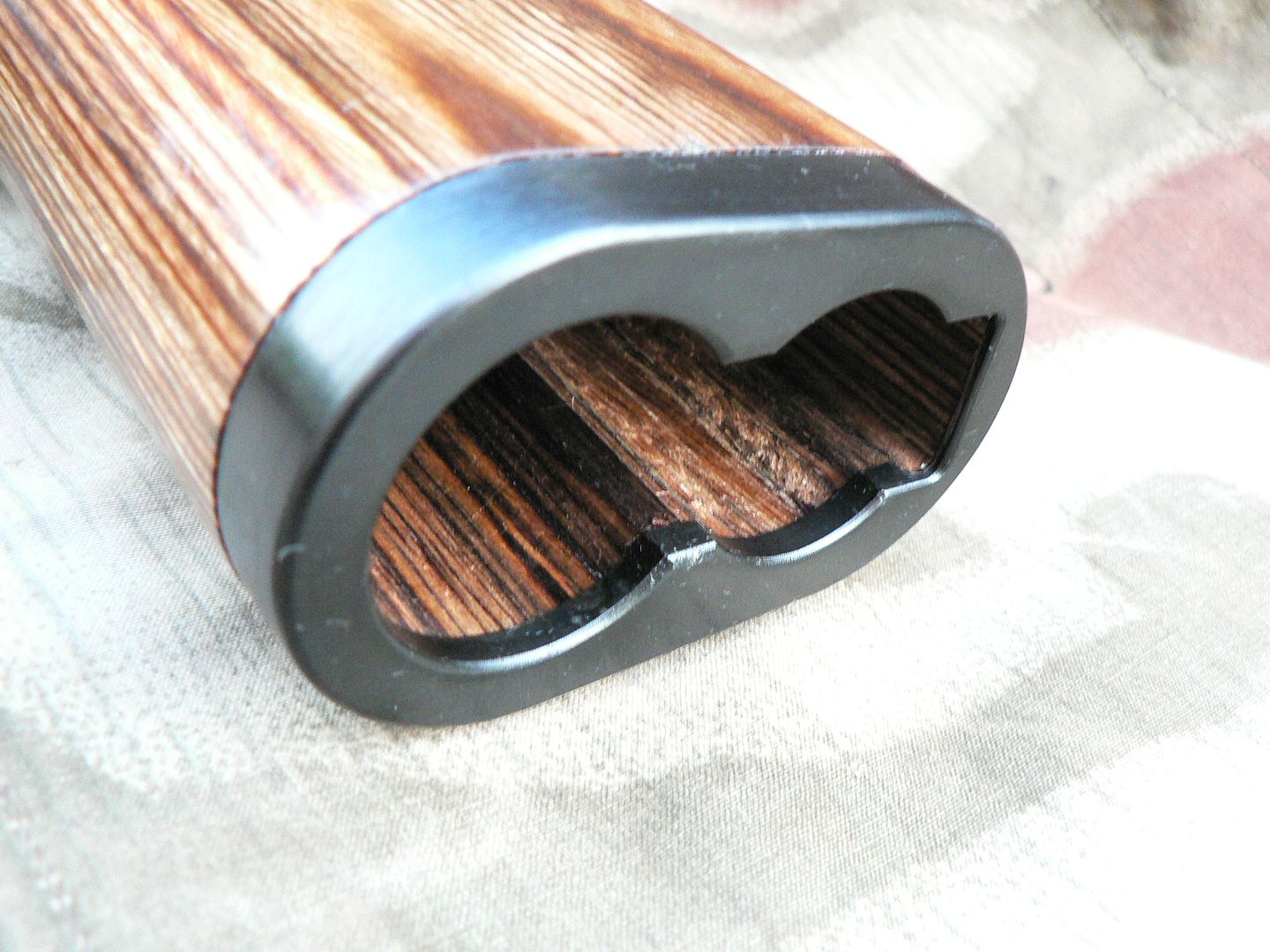Tonight, we are only going to look at the stock and the rear of the receiver so it's going to be a short post.
The laminated stock is made from 27 (if I counted correctly) layers of walnut. Where SMG found a lumber producer that was willing to produce walnut blocks that thick and with that many layers is beyond me but it is a thing of beauty. It has very little drop to it as you move to the rear and, even when it does drop, it rises again where it meets the shoulder. This straight line configuration, combined with the excellent muzzle brake and the buffer (discussed later), keeps muzzle rise at an absolute minimum. The entire stock is hollow because it slides over the rear of the receiver. It is available in both a dark and a light finish. Both are shown below:

The steel butt plate commonly found on German rifles is absent on the FG42. Instead, there is another block of wood inserted and into the back of the hollow stock and held in place with two pins. This insert forms the rear of the stock and it has finely cut ribs for grip when the rifle is shouldered:

On original rifles, the union of this insert and the hollow stock was a weak point. With use, the pins holding the insert in place would crack out the end of the stock and essentially render it useless. The rifle can still be fired without the stock in place but it cannot be shouldered.
Let's look at those pins and discuss what SMG has done to address the problem:

SMG has done two things to mitigate the "pin pullout" problem.
1. The pins have been moved farther apart. This makes the insert more stable in the stock, spreading impact forces over a greater area.
2. Aluminum reinforcement tabs are hidden inside the stock so that the pins are pulling on metal and wood instead of just wood.
According the SMG, this eliminates the problem. Time will tell but their solution seems reasonable.
Between the two pins is a little button with concentric rings machined into it. This is the push button for stock removal. Simply press the button and slide the stock to the rear off the receiver.
In this picture, the stock has been removed and placed below the receiver in a position relative to it being mounted:

Sticking out the rear of the receiver is the buffer. We'll take a closer look at the buffer later but for now, all you need to know about it is that it has a heavy spring inside and serves three purposes. First, it lessens the felt recoil of the rifle. Second, it serves as the mechanism that holds all of the guts in the receiver where they belong. Third, it is the attachment point for the stock. You see, the stock does not attach to the receiver; it merely rides over the receiver. Do you see that little grooved and pointed nub sticking out the extreme rear of the buffer? That's the only thing holding the stock in place. The push button on the side of the stock pushes in on a spring loaded collar inside the stock. This collar engages the groove on the nub and this holds the stock on the rifle. The nub is conical on the tip so that you don't have to press the button to mount the stock; just slide it over the rear of the receiver and push. It sounds like it would be fragile but it seems to work just fine. The reason the stock slides over the receiver instead of attaching to it is because the entire rifle actually recoils into the stock. Again, we'll discuss that in detail later when we look at the buffer. Notice that the sling is mounted to the stock with a funky metal thingee. We'll talk about that later too when we look at the sling.
At the front of the stock is a blued steel ring:

On original rifles, this part would be stamped but here it's milled just like everything else. This ring protects and strengthens the front opening in the stock. Notice that it is cut out in roughly the shape of a receiver cross section. This helps to keep it from rattling around too much on the receiver.
Let's go back to the picture showing the stock below the receiver:

Notice that there is a bulge in the receiver just above the front ring on the stock and another at the rear of the receiver where the buffer is mounted. These, and the flat area on top of the receiver, are the main surfaces that the stock rides against. This arrangement minimizes contact points between the receiver and stock while keeping the two assemblies running parallel to each other at all times. Without them, the stock would flop around quite a bit.
That's it for the stock. Short (kinda') and sweet for once. See you soon!